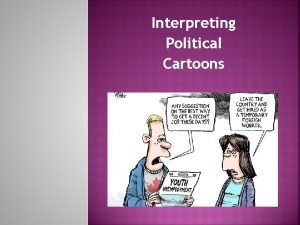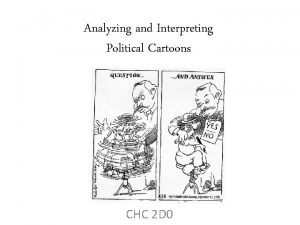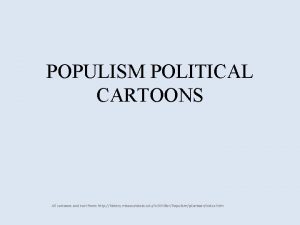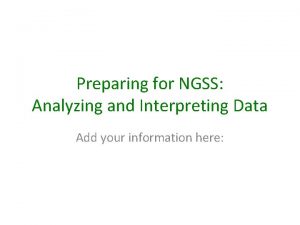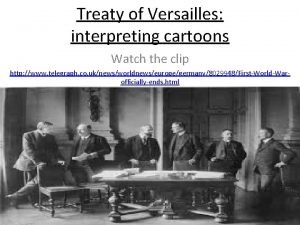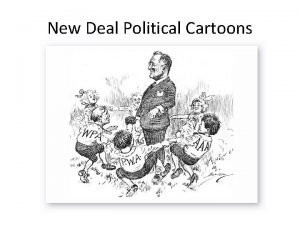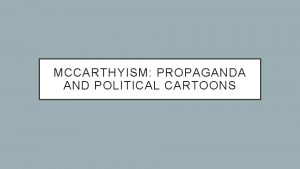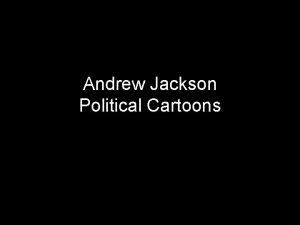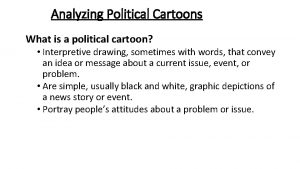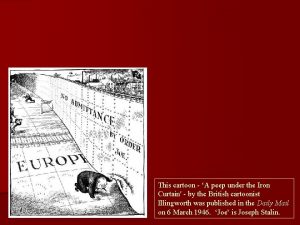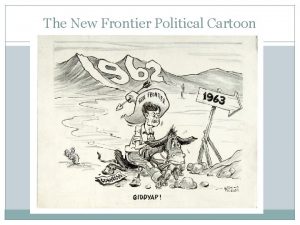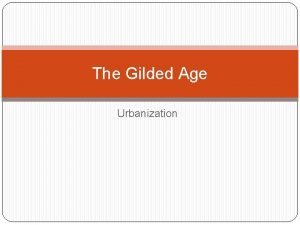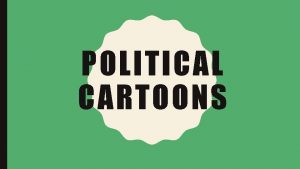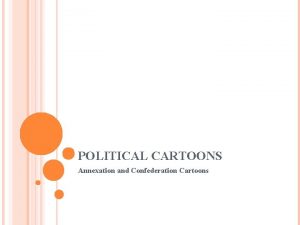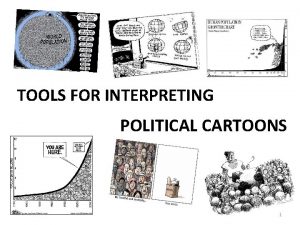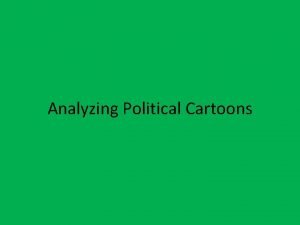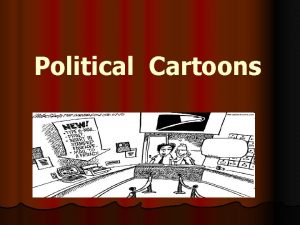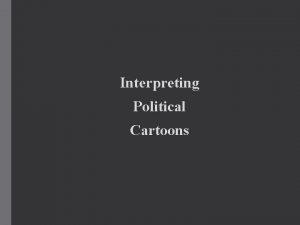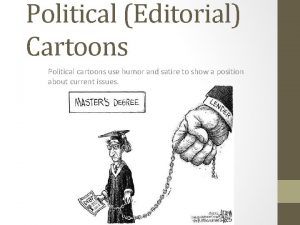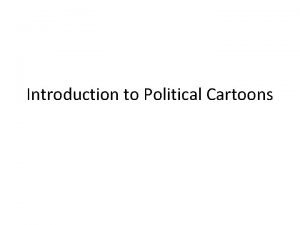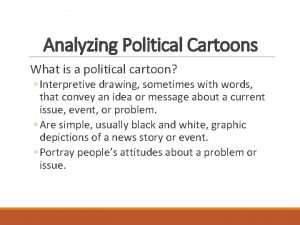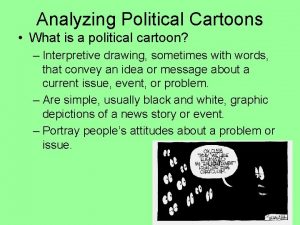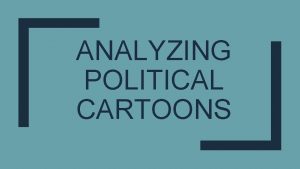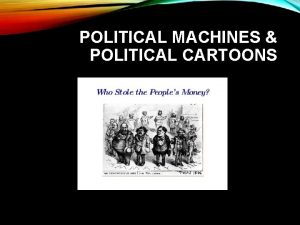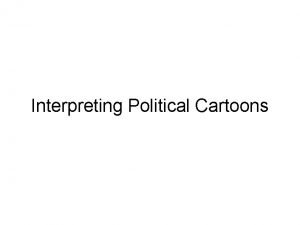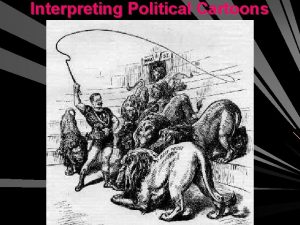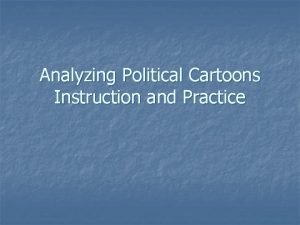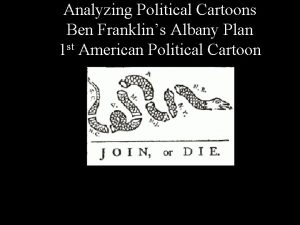Analyzing and Interpreting Political Cartoons CHC 2 D




























- Slides: 28

Analyzing and Interpreting Political Cartoons CHC 2 D 0

Analyzing and Interpreting Political Cartoons • Political cartoons must make their point succinctly and forcefully. • The most successful cartoonists rely on one or more of the following techniques to make a bold visual statement.

Analyzing and Interpreting Political Cartoons Exaggeration An object, person, situation or idea is overstated. An issue, particularly where someone is perceived to be at fault or wrong, is emphasized and underlined by magnifying or diminishing its relative importance. Also see Size and Caricature.

Analyzing and Interpreting Political Cartoons Size A difference in size among objects or people emphasizes or diminishes the relative importance of objects or people.

Analyzing and Interpreting Political Cartoons Caricature Probably the most widely used technique, caricature purposefully exaggerates a particular part of a figure (often in the face) or an object. The figures or objects will appear distorted or ridiculous while remaining instantly recognizable

Caricatures of Political Leaders Jacques Parizeau: Leader of Parti Québécois during The 1995 Referendum

Caricatures of Political Leaders Lucien Bouchard: Form member of PC, former leader of Bloc Québécois, former leader of Parti Québécois

Caricatures of Political Leaders

Caricatures of Political Leaders

Analyzing and Interpreting Political Cartoons Stereotyping Groups of people may be represented in an over-simplified and inaccurate fashion to call attention to them or to the central issue.

Analyzing and Interpreting Political Cartoons Allusion Political cartoons refer to current events and issues. Consequently, the political cartoon may lose some of its effect with the passage of time.

Analyzing and Interpreting Political Cartoons Symbolism In cartoons, one object can, and often does, stand for another. A comparison is clearly made between two or more otherwise separate figures, objects or events.

Analyzing and Interpreting Political Cartoons Comparison / Contrast Differences or similarities can be highlighted by placing similar or different items or people together.

Analyzing and Interpreting Political Cartoons • Step One: • When analyzing political cartoons, you must – Identify the main features by: • • Describing all the elements in the cartoon Look for a date and/or place on the cartoon Identifying and explaining the cartoon devices used Decide which are the most important elements to help you in understanding what the cartoon is about

Identifying 1. What are the main elements?

identifying 2. Identify when and where the cartoon was created.

Identifying comparison Stereotyping Symbolism Caricature 3. Identify and explain the main cartoon techniques used.

Identifying 4. What are the most important elements? 5. What might they be saying?

Analyzing and Interpreting Political Cartoons • Step Two: • When analyzing political cartoons, you must – Analyze the cartoon as a whole by: • Identifying the main event or issue in the cartoon • Explain the cartoonist’s message about the event

Analyzing 1. What is the event being depicted? Referendum 1995 OR Meech Lake Accord?

Analyzing 2. What is the cartoonist’s message? Separation is going to fail because of • Parizeau, Aboriginals, OR • Both?

Analyzing and Interpreting Political Cartoons • Step Three: • When analyzing political cartoons, you must – Judge the effectiveness of the cartoon by: • Agreeing or disagreeing with the cartoonist’s take on the event or issue • Deciding how well or poorly the cartoon presents the event, issue, or people involved

Judging Do you agree with the cartoonist’s take on this issue? Yes: Separatism hurts Quebec OR No: Separatism benefits Quebec

Judging Has the cartoon presented the issue well? Yes: it’s clear, succinct, & funny OR No: it presents negative stereotypes

Practice

Practice

Practice

Applying the Concepts • You have had an opportunity to examine, analyze, interpret and judge examples of political cartoons on a number of issues. • Now it’s time to create your own political cartoon. • Pick a current issue and use three or more of the common cartoon devices / techniques.
 Interpret cartoon
Interpret cartoon Interpreting political cartoons 2 answer key
Interpreting political cartoons 2 answer key Here lies prosperity cartoon
Here lies prosperity cartoon Farmer protest cartoons
Farmer protest cartoons Analyzing and interpreting quantitative data
Analyzing and interpreting quantitative data Planning recording analyzing and interpreting
Planning recording analyzing and interpreting What is a research design
What is a research design Analyzing and interpreting data in research
Analyzing and interpreting data in research Analyzing and interpreting data in research
Analyzing and interpreting data in research Analyzing and interpreting literature
Analyzing and interpreting literature Analyzing and interpreting data in research
Analyzing and interpreting data in research Analyzing and interpreting data in research
Analyzing and interpreting data in research Analyzing and interpreting literature
Analyzing and interpreting literature Analyzing and interpreting data
Analyzing and interpreting data Dust bowl migration map
Dust bowl migration map Russian revolution cartoons
Russian revolution cartoons Treaty of versailles cartoon
Treaty of versailles cartoon Estate system cartoon
Estate system cartoon Stock market great depression political cartoon
Stock market great depression political cartoon Fdr new deal political cartoon
Fdr new deal political cartoon Mcarthyism political cartoon
Mcarthyism political cartoon Cuban missile crisis political cartoon
Cuban missile crisis political cartoon Cartoons
Cartoons Political cartoon exaggeration
Political cartoon exaggeration Political cartoon iron curtain
Political cartoon iron curtain Jfk assassination political cartoon
Jfk assassination political cartoon Great depression political cartoons
Great depression political cartoons American imperialism political cartoons explained
American imperialism political cartoons explained Analyze
Analyze
